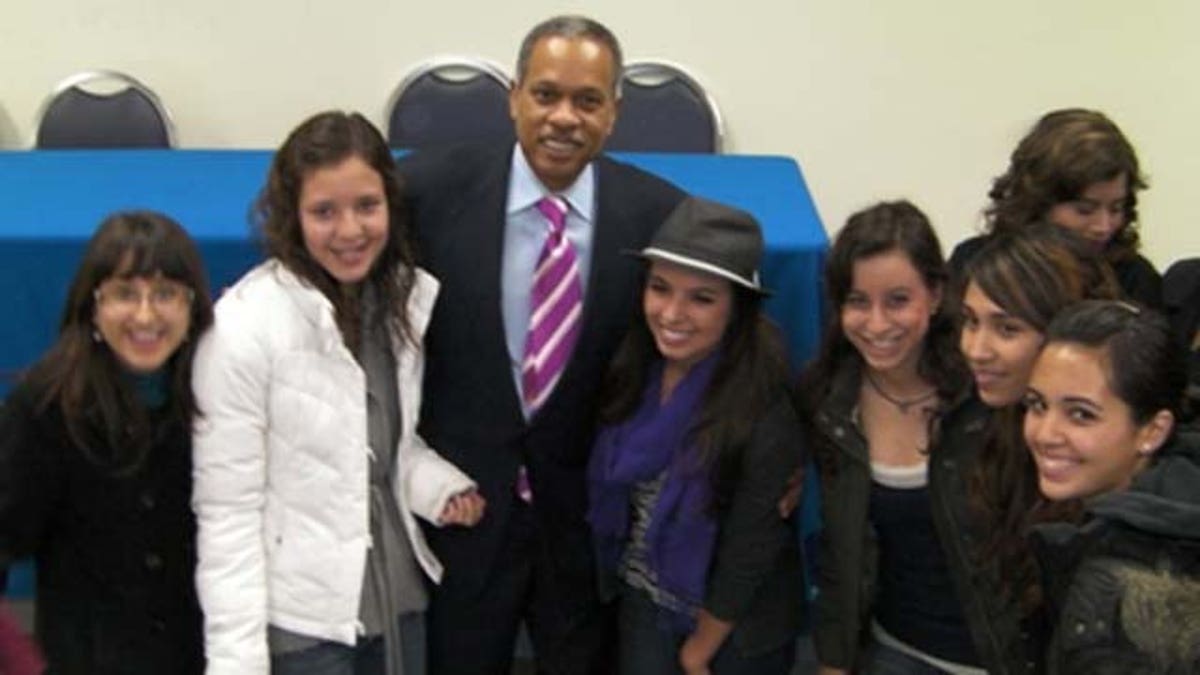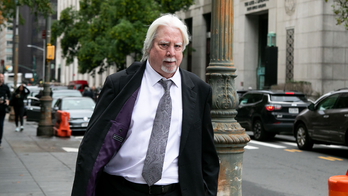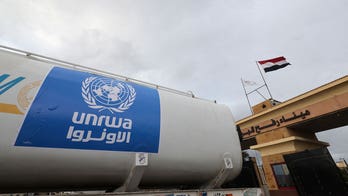
SANYO DIGITAL CAMERA
Editor's note: Writer and Fox News political analyst Juan Williams traveled to Mexico earlier this year as part of a joint effort by the U.S. Embassy, the United Nations and the Mexican government. The invitation was extended because both governments and the United Nations wanted a well-known American journalist to join with Mexican journalists in speaking out against the outright intimidation being used to silence any writing or broadcasting stories about the effects of the drug trade on Mexico. Williams' reports are in five parts and will be featured on FoxNews.com through the rest of the month of December.
Pt. 1 – No One to Tell Their Story
Christmas is all about the Christ child, baby Jesus.
By extension, Christmas is about the children of the world. That includes children living in one of the most violent places in the world. This Christmas of 2010 you can get into that horror movie by walking the short distance across the U.S. border from El Paso to Ciudad Juárez, Mexico.
There is no room at the inn, no place safe from violence for any child in Juárez. The rest of Mexico is not much safer.
In early December, the Mexican Army arrested a skinny 14-year-old boy suspected of working as a hit man for a Mexican drug cartel. The boy, Edgar Jiménez, was arrested in Cuernavaca, about an hour south of Mexico City, but his mother lives in San Diego and U.S. embassy officials are advising Jiménez on his legal rights because it is possible he was born in the U.S. and is an American citizen. Beginning at age 12, Jiménez is alleged to have tortured numerous people and executed at least four people – all by decapitation -- in exchange for money and drugs. He had bloody pictures of his victims on his cell phone, according to the military.
After Jiménez’ arrest, an expert on Latin America at the University of Miami, Bruce Bagley, told The Wall Street Journal: “The kids [in the narcotics cartels] are getting younger and younger. Mexico has fallen into a spiral that will scar a whole generation. Life is cheap and getting cheaper.”
The disturbing pressure the drug wars put on children like Jiménez is easy to see in Juárez. Since the Mexican government went to war with drug lords in 2006, about 20 percent of the 30,000 drug-related murders in Mexico have taken place here.
People in Juárez are nervous about even stopping at a red light because the drug cartels hire gangbangers like Jiménez – poor children, drop-outs with automatic weapons who might as well be playing video games -- to shoot it out. The violence is often public because the cartels want to be feared as they vie for control of Juárez, the most critical junction of all drug trafficking routes into the U.S. Murderous violence hangs over everyday life in Juárez like suffocating hot air.
In this city of 1.3 million, about 3,000 people have been killed this year. Last year, the total was about 2,763. In 2008, it was 1,623. Altogether, that amounts to more than 5,000 people in two-and-a-half years. In all, 7,386 have died in Juárez in the last 3 years. And this does not include 1,900 carjackings in 2009 or the unknown number of people who have been kidnapped, tortured and blackmailed. Even more people can testify to losing family and friends to the violence.
In June, a week before my second trip to Juárez, 16 people had been killed – execution style -- in one day in Juárez. A few days before that bloodshed, a gunman sprayed a group of kids playing volleyball in park. He killed at least four. Two weeks earlier, in the nearby city of Chihuahua, 19 people had been killed in one attack.
During my first visit to Juarez in February, President Felipe Calderón came here to express his sorrow for 15 teenagers who died in January from gunfire at a single Saturday night house party. But mothers of the dead stood up at his press conference and turned their backs to him to express their disdain. The Mexican president angered the mothers because he told reporters the violence in Juárez amounted to slaughter among low-life drug dealers. The grieving mothers reacted with outrage. They said their children are good kids who have nothing to do with the drug cartels; they just wanted to have some fun but could not go out to any nightclubs or even restaurants because of fear of the violence that still found them at a private house.
I had initially come to Mexico as part of a joint effort by the U.S. Embassy, the United Nations and the Mexican government. They wanted a well-known American journalist to join with Mexican journalists in speaking out against the outright intimidation, even murder, being used to silence any writing or broadcasting stories about the drug trade. Journalists here operate in a state of fright. Investigative work, stories about ties between drugs, politicians, banks and police, is stifled by fear of murderous reprisals.
Even when a journalist is killed here, there is no common expression of outrage among newspapers, TV and radio programs. There is little if any celebration of the dead journalist’s courage. In fact, news outlets are slow to report the murders of journalists and some outlets will allow defamatory suggestions that the journalist might have been involved with drugs or on the payroll of the cartels.
That assault on journalists is effectively paralyzing the flow of information about the drug war here and undermining public resolve to fight the drug cartels. Stories about mass murders get told. But in Mexico and around the world, the stories of damage to everyday people, especially children, are not being told.
Mexico’s journalism famine led a girl who looked to be about 14 to nervously stand up in an auditorium of high school students in February to ask me a question – but it felt like an accusation. The girl with pigtails wanted to know why my fellow journalists in Mexico did not report in the newspapers or TV news programs about a dead body she saw on the sidewalk near her house in a residential section of Juárez. She was scared. It was the most horrible, frightening sight she had ever seen. Yet when she looked at the newspapers and watched TV news it was as if nothing had happened because there was no mention of the horror of a life loss steps from her home.
Other young people told me stories about living with death all around, stories that never get into any paper. At a college in Juárez a 19-year-old with long hair said he could no longer walk his dog for fear of being killed. And a 20-year-old woman said she loved playing violin but her parents did not want her to go to practice anymore because it kept her out late. She gave up the violin.
The stories of young lives trapped in the deadly mix of guns, drugs and fear stayed with me. In interviews Mexican politicians and police remind me that most of the killers and those being killed are kids – teenagers. One Mexican politician said simply there is a lot of “young blood on the floor.” He said this in passing without any emotion or emphasis. But the words stayed with me. The idea upset me.
Francisco Arce, a Mexican artist I later met in Juárez added his own twist: “The young people are between two fires – they are criminalized, held responsible for what is going on, and they are victims of what is going on.”
For Behind the Scenes videos with Juan Williams click here.
Juan Williams is a writer and Fox News political analyst. Look for Part 2 of this series tomorrow.




